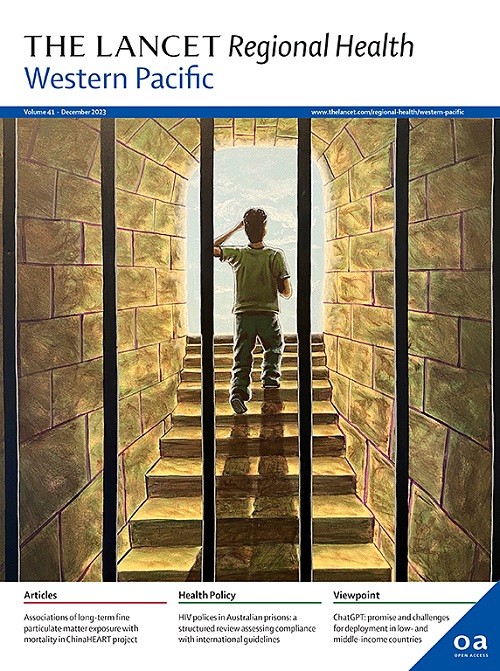Consolidative and salvage thoracic radiotherapy (TRT) in extensive-stage small-cell lung cancer (ES-SCLC) with first-line chemoimmunotherapy: a retrospective study from a single cancer center
IF 7.6
1区 医学
Q1 HEALTH CARE SCIENCES & SERVICES
引用次数: 0
Abstract
Extensive-stage small-cell lung cancer (ES-SCLC) continues to have poor outcome despite the survival improvements achieved by chemoimmunotherapy. Controversy exists regarding the survival effectiveness of consolidative thoracic radiotherapy (cTRT), and the role of salvage thoracic radiotherapy (sTRT) remains unexplored in the immunotherapy era. To address these issues, we conducted this retrospective study to investigate the impacts of cTRT and sTRT in ES-SCLC, and to compare the survival benefits of the two treatment regimes. ES-SCLC patients without baseline brain metastases receiving standard first-line chemoimmunotherapy were included in our study, cohorts were divided by treatment with cTRT, sTRT and no TRT. Kaplan-Meier survival curve and log-rank test were performed for comparison of survival between different groups. Univariable and multivariate analyses were carried out for further estimating the survival effectiveness of TRT. A total of 100 ES-SCLC patients without baseline brain metastases were included in our study, with 24 (24.0%) were allocated to the cTRT group, 18 (18.0%) were allocated to the sTRT group, and 58 (58.0%) to the No TRT group. cTRT dramatically decreased the rate of intrathoracic failure compared to sTRT and No TRT (29.4% vs. 60.0%). Moreover, patients who received cTRT had better overall survival (OS) compared to those who did not receive cTRT (median OS, not reached vs. 14.1 months; HR=0.40, 95% CI: 0.22-0.70, P=0.01). However, cTRT did not show significantly superior OS compared to sTRT alone (median OS, not reached vs. 21.0 months; HR=0.67, 95% CI: 0.27-1.66, P=0.39). In contrast, patients with only thoracic oligo-progression receiving sTRT (N=13) harbored better OS compared to patients with the same progression pattern in No TRT group (N=20) (median OS, 28.6 vs. 13.8 months; HR=0.44, 95% CI: 0.20-0.98, P=0.04). In conclusion, our study demonstrated in the chemoimmunotherapy era that cTRT greatly reduced the rate of initial intrathoracic failure and significantly improved the OS of ES-SCLC. Additionally, sTRT showed similar OS benefits with cTRT, and exhibits better OS compared to No TRT.
巩固性和补救性胸部放疗(TRT)在大分期小细胞肺癌(ES-SCLC)和一线化学免疫治疗中的应用:一项来自单一癌症中心的回顾性研究
广泛期小细胞肺癌(ES-SCLC)的预后仍然很差,尽管化疗免疫治疗改善了患者的生存。关于胸部巩固放疗(cTRT)的生存有效性存在争议,而在免疫治疗时代,补救性胸部放疗(sTRT)的作用仍未被探索。为了解决这些问题,我们进行了这项回顾性研究,调查了cTRT和sTRT对ES-SCLC的影响,并比较了两种治疗方案的生存益处。我们的研究纳入了接受标准一线化疗免疫治疗的无基线脑转移的ES-SCLC患者,按cTRT、sTRT和不TRT治疗分组。采用Kaplan-Meier生存曲线和log-rank检验比较各组间的生存情况。进行单变量和多变量分析以进一步估计TRT的生存有效性。我们的研究共纳入了100例基线无脑转移的ES-SCLC患者,其中24例(24.0%)分配到cTRT组,18例(18.0%)分配到sTRT组,58例(58.0%)分配到No TRT组。与sTRT和No TRT相比,cTRT显著降低了胸内衰竭的发生率(29.4%比60.0%)。此外,接受cTRT的患者比未接受cTRT的患者有更好的总生存期(中位OS,未达到vs. 14.1个月;Hr =0.40, 95% ci: 0.22-0.70, p =0.01)。然而,与单纯的sTRT相比,cTRT并没有显示出显著的OS优势(中位OS,未达到vs. 21.0个月;Hr =0.67, 95% ci: 0.27-1.66, p =0.39)。相比之下,仅接受sTRT治疗的胸部少进展患者(N=13)比未接受TRT治疗的相同进展模式的患者(N=20)有更好的OS(中位OS, 28.6 vs 13.8个月;Hr =0.44, 95% ci: 0.20-0.98, p =0.04)。总之,我们的研究表明,在化学免疫治疗时代,cTRT大大降低了初始胸内衰竭的发生率,并显著提高了ES-SCLC的OS。此外,sTRT表现出与cTRT相似的操作系统优势,并且与No TRT相比表现出更好的操作系统。
本文章由计算机程序翻译,如有差异,请以英文原文为准。
求助全文
约1分钟内获得全文
求助全文
来源期刊

The Lancet Regional Health: Western Pacific
Medicine-Pediatrics, Perinatology and Child Health
CiteScore
8.80
自引率
2.80%
发文量
305
审稿时长
11 weeks
期刊介绍:
The Lancet Regional Health – Western Pacific, a gold open access journal, is an integral part of The Lancet's global initiative advocating for healthcare quality and access worldwide. It aims to advance clinical practice and health policy in the Western Pacific region, contributing to enhanced health outcomes. The journal publishes high-quality original research shedding light on clinical practice and health policy in the region. It also includes reviews, commentaries, and opinion pieces covering diverse regional health topics, such as infectious diseases, non-communicable diseases, child and adolescent health, maternal and reproductive health, aging health, mental health, the health workforce and systems, and health policy.
 求助内容:
求助内容: 应助结果提醒方式:
应助结果提醒方式:


